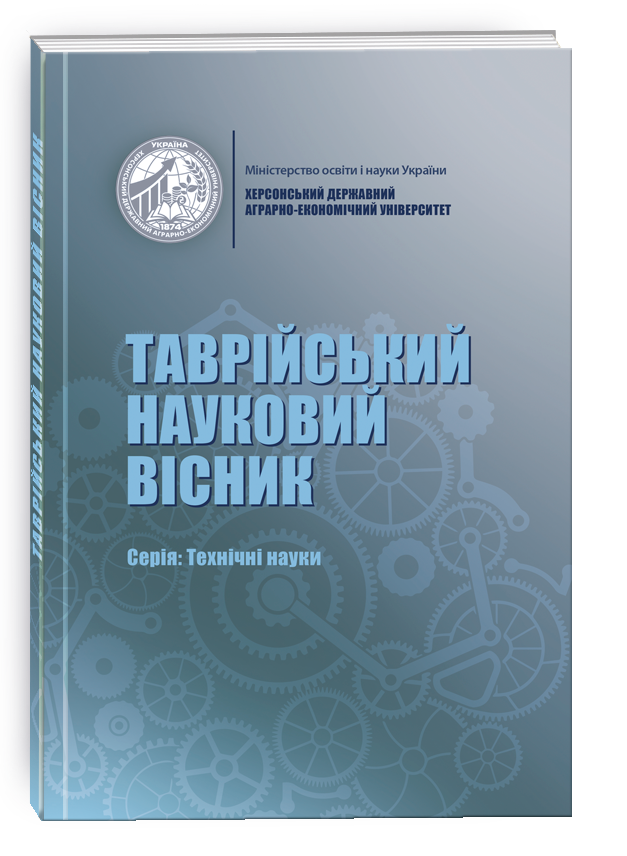EXPANDING THE RANGE OF PASTA WITH Β -CAROTENE
DOI:
https://doi.org/10.32851/tnv-tech.2022.2.3Keywords:
pasta, β-carotene, flour, organoleptics, physicochemical parameters.Abstract
Given the popularity of pasta, they are produced in large quantities in every country in the world. Manufacturers face the problem of maintaining markets. To do this, new recipes are being developed with natural food additives and dyes. Therefore, in our opinion, the issue of developing a recipe for pasta with β-carotene is relevant. Analyzing the results of scientific research by scientists from different countries, it can be noted that the most popular food additives used in the pasta industry are legumes, vegetables, fruits, berries, algae. Along with plant components, animal protein component and aquatic organisms are used. Our task was to develop a recipe for pasta with the addition of β-carotene powder, conduct their organoleptic evaluation and determine the physico-chemical parameters. To solve these problems, we chose as an additive β-carotene powder made in China with a provitamin A content of 12%. The first sample was a control, the second contained 10% β-carotene powder, and the third 13 In general, variations in the sensory profile are insignificant for the presented pasta. The addition of β-carotene powder had a positive effect on this indicator. Sample № 3 had a more pronounced yellow hue compared to other samples. Along with sensory indicators, physicochemical ones are also important. As the second sample was slightly inferior to the first and third in the assessment of organoleptic parameters, it was not used to study physicochemical parameters. Analyzing the results, it should be noted that the replacement of β-carotene powder in the recipe of wheat flour significantly affected the strength of the finished product. The figure has halved. Similar results were obtained by other researchers. Different additives affect the strength index differently depending on the interaction between proteins, starch and fibers at the microscopic and molecular levels. Taking into account the results of the described studies, it should be noted that the developed formulation of pasta with 13% β-carotene powder had a positive effect on the organoleptic and physicochemical parameters of the finished product. Given the decrease in the strength of the produced pasta, it is advisable to additionally introduce an egg into the recipe, determine the content of vitamins and assess the market potential of the proposed product.
References
Fuad T., Prabhasankar P. Role of ingredients in pasta product quality: a review on recent developments. Crit Rev Food Sci Nutr. 2010. Vol. 50, № 8. Р. 787–798. https://doi:10.1080/10408390903001693
Li M., Zhu K.-X., Guo X.-N., Brij, K., Zhou H.-M. Natural Additives in Wheat- Based Pasta and Noodle Products: Opportunities for Enhanced Nutritional and Functional Properties. Comprehensive Reviews in Food Science and Food Safety. 2014. Vol. 13, № 4. Р. 347–357. https://doi.org/10.1111/1541-4337.12066
Bianchi F., Tolve R., Rainero G., Bordiga M., Brennan C.S., Simonato B. Technological, nutritional and sensory properties of pasta fortified with agroindustrial by-products: a review. Int. J. Food Sci. Technol. 2021. № 56. Р. 4356–4366. https://doi.org/10.1111/ijfs.15168
Osipova G.A., Berezina N.A., Seregina T.V., Hmeleva E.V., Nikitin I.A., Zavalishin I.V. Research of Effect of Protein-Containing Additives on Pasta Quality and Biological Value. Advances in Engineering Research. International scientific and practical conference "AgroSMART – Smart solutions for agriculture" (AgroSMART 2018). 2018. Р. 262–268. https://doi.org/10.2991/agrosmart-18.2018.51
Simonato B., Trevisan S., Tolvea R., Favatia F., Pasinib G. Pasta fortification with olive pomace: Effects on the technological characteristics and nutritional properties. LWT. 2019. № 114. Р. 108368. https://doi.org/10.1016/j.lwt.2019.108368
Porto Dalla Costa A., Cruz Silveira Thys R., De Oliveira Rios A., Hickmann Flôres S. Carrot flour from minimally processed residue as substitute of β-carotene commercial in dry pasta prepared with common wheat (Triticum aestivum). Journal of Food Quality. 2016. № 39. Р. 590–598. https://doi.org/10.1111/jfq.12253
Bo-Ra Kim, Suna Kim, Gui-Seck Bae, Moon Baek Chang, BoKyung Moon. Quality characteristics of common wheat fresh noodle with insoluble dietary fiber from kimchi by-product. LWT – Food Science and Technology. 2017. № 85. Р. 240–245. https://doi.org/10.1016/j.lwt.2017.07.027
Padalino L., Conte A., Lecce L., Likyova D., Sicari V., Maria Pellicanò T. et al. Functional pasta with tomato by-product as a source of antioxidant compounds and dietary fibre. Czech J. Food Sci. 2017. № 35. Р. 48–56. https://doi.org/10.17221/171/2016-CJFS
Tolve R., Pasini G., Vignale F., Favati F., Simonato B. Effect of grape pomace addition on the technological, sensory, and nutritional properties of durum wheat pasta. Foods. 2020. Vol. 9. № 3. Р. 354. https://doi.org/10.3390/foods9030354
Rigacci S. Olive oil phenols as promising Alzheimer’ s Disease. Advances in Experimental Medicine and Biology. 2015. № 863. Р. 1–20. https://doi.org/10.1007/978- 3-319-18365-7_1
Gorzynik-Debicka M., Przychodzen P., Cappello F., Kuban-Jankowska A., Marino Gammazza A., Knap N. et al. Potential Health Benefits of Olive Oil and Plant Polyphenols. International Journal of Molecular Sciences. 2018. Vol. 19. № 3. Р. 686. https://doi.org/10.3390/ijms19030686
Kowalczewski P., Lewandowicz G., Makowska A., Knoll I., Błaszczak W., Białas W., Kubiak P. Pasta fortified with potato juice: structure, quality, and consumer acceptance. Journal of Food Science. 2015. № 80(6). Р. 1377–1382. https://doi.org/10.1111/1750-3841.12906
Pan W.C., Liu Y.M., Shiau S.Y. Effect of okara and vital gluten on physicochemical properties of noodle. Czech Journal of Food Sciences. 2018. № 36. Р. 301–306. https://doi.org/10.17221/329/2017-CJFS
Kamble D.B., Singh R., Rani S., Pratap D. Physicochemical properties, in vitro digestibility and structural attributes of okara-enriched functional pasta. J Food Process Preserv. 2019. № 43(12). Р. e14232. https://doi.org/10.1111/jfpp.14232
Sule S., Oneh A.J., Agba I.M. Effect of carrot powder incorporation on the quality of pasta. MOJ Food Process Technol. 2019. № 7(3). Р. 99–103. https://doi.org/10.15406/mojfpt.2019.07.00227
Marinelli V., Padalino L., Nardiello D., Del Nobile M.A., Conte A. New approach to enrich pasta with polyphenols from grape marc. Journal of Chemistry. 2015. Р. 1–8. https://doi.org/10.1155/2015/734578







